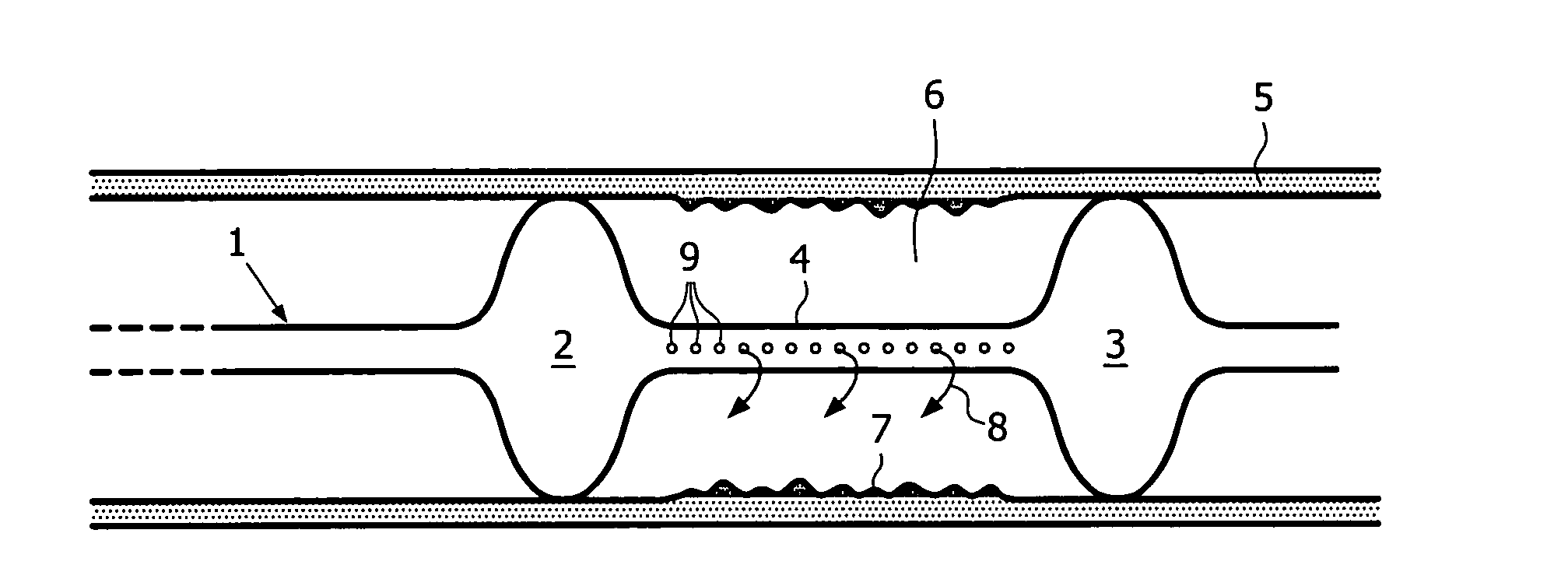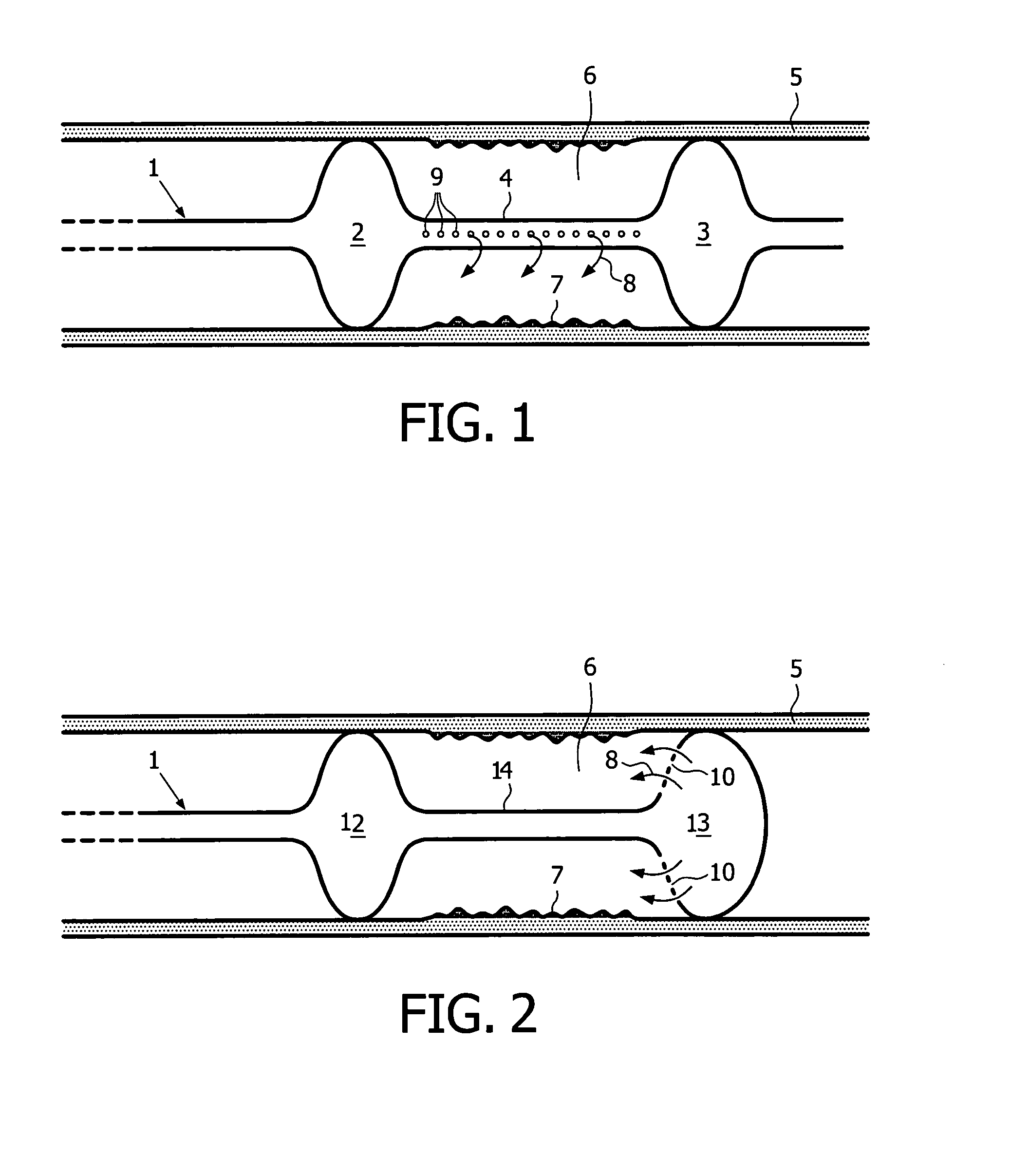Use of Keratinocyte Composition for the Treatment of Restenosis
- Summary
- Abstract
- Description
- Claims
- Application Information
AI Technical Summary
Benefits of technology
Problems solved by technology
Method used
Image
Examples
example 1
Preparing Cultured Keratinocytes In Vitro
[0059]Skin biopsies were harvested from burn patients, cleaned with 70% ethanol, and processed according to Rheinwald and Green's keratinocyte isolation method (Rheinwald J. G., Green H.: Cell serial cultivation of strains of human epidermal keratinocytes: the formation of keratinizing colonies from single cells. Cell, 6: 331-44, 1975). Skin biopsies were trypsinized overnight at 4 deg C. in a 0.05% trypsin / 0.02% EDTA solution. The cells were isolated from the epidermal / dermal junction and plated onto a feeder monolayer of lethally irradiated 3T3 cells. The medium was made up of three parts Dulbecco's modified with Eagle's medium plus one part Ham's F12 medium. The following were added to the mixture: cholera toxin (0.1 nM), hydrocortisone (0.4 pg / ml), triiodo-I-thyronine (20 pM), insulin (5 pg / ml), transferrin (5 pg / ml), fungizone (250 pg / ml), penicillin (1000 IU / ml), streptomycin (1000 pg / ml), and 10% foetal calf serum. Epidermal growth fac...
example 2
Treatment of a Wound
[0060]A 51 year old patient presents a 8 mm long stenotic lesion in the proximal part of the right coronary artery. A 3.5 mm diameter balloon is used to dilate the artery and a 16 mm long magnesium alloy stent is inserted and positioned at the level of the former vessel narrowing. A deflated Genie dumbbell balloon is introduced and accurately positioned at the level of the magnesium alloy stent. Ten ml of a solution containing 100000 keratinocytes / ml with 0.1 mM of Mn2+ is used to inflate the Genie balloon. The inflation of the Genie balloon is followed by the flow of the composition through small holes located on the inner wall of the distal balloon enlargement. This contributes to the filling of the space located between both larger balloon parts and the tight contact of the solution of keratinocytes with the vessel wall. A pressure of 2 Atm is necessary to keep the Genie balloon expanded and to let the keratinocyte solution stay in contact with the vessel wall...
example 3
Treatment of a Wound
[0061]A 76 y old patient presents with a narrowing of his popliteal artery with some pain and claudication after a walk of 300 m. An angiographic examination shows a narrowing of the artery on a length of 5 cm. A percutaneous transcatheter angioplasty (PTA) is performed at the level of the vessel narrowing and a wallstent is inserted at the level of the lesion. A 8 cm long Genie balloon is introduced inside the artery and is accurately placed at the level of the dilated lesion. Thirty ml of a keratinocyte suspension stimulated by nanomolar suspension of fibronectin and by 0.1 mM of Mn2+ is infused in the Genie balloon and in the intra-vascular space. The patient does not show any sign of recurrence 8 months later. A Doppler evaluation shows a regular, non interrupted blood flow in the vessel.
PUM
 Login to View More
Login to View More Abstract
Description
Claims
Application Information
 Login to View More
Login to View More - R&D
- Intellectual Property
- Life Sciences
- Materials
- Tech Scout
- Unparalleled Data Quality
- Higher Quality Content
- 60% Fewer Hallucinations
Browse by: Latest US Patents, China's latest patents, Technical Efficacy Thesaurus, Application Domain, Technology Topic, Popular Technical Reports.
© 2025 PatSnap. All rights reserved.Legal|Privacy policy|Modern Slavery Act Transparency Statement|Sitemap|About US| Contact US: help@patsnap.com


